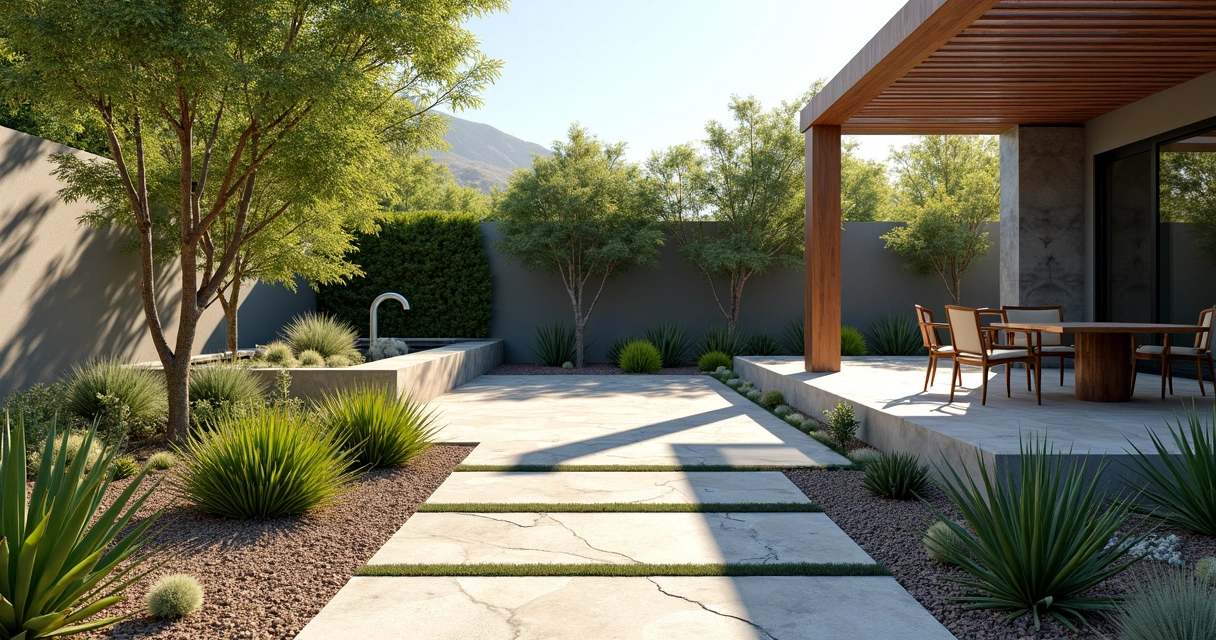Austin is changing. Water is more valuable—some days, maybe more than gold. Lawn sprinklers run less often, yet people still dream of relaxing in lush, beautiful outdoor spaces. The question is, can your garden thrive and look modern, fresh, and inviting while being responsible with water?
The answer—absolutely—lies in rethinking what an outdoor oasis should look like. This is where the concept of xeriscaping, especially for Austin homeowners and businesses, comes in. Urban Oasis has seen firsthand how people crave outdoor sanctuaries, but they want those spaces to be smart: eco-conscious, architectural, and undeniably stylish. But doubts linger: Will it look bare? Is it only for desert lovers? Does “water-wise” mean giving up green dreams?
Style doesn’t depend on how much you water.
Let’s see how modern landscape design makes low-water, high-style spaces possible—even luxurious—for those with high standards (and maybe not a lot of spare time).
What xeriscaping means for Austin’s outdoor culture
You might have seen the term before, but sometimes, it seems ambiguous. Xeriscaping isn’t just gravel and succulents. It’s an approach, not a strict recipe. In places like Austin—where the summers last, the soil can be tough, and water restrictions tighten—the approach matters more than ever.
According to some leading studies on xeriscaping, low-water landscaping doesn’t just protect resources; it promotes biodiversity and can soften the heat of the city itself.
Urban Oasis works with families who entertain outside, professionals with little time for upkeep, retirees who want beauty without chores—and all of them expect more than utility. They want an aesthetic experience. Modern xeriscaping brings that, sometimes even more strikingly than a conventional lawn.
How water-wise design meets modern luxury
People sometimes think xeriscaping looks sparse or “unfinished.” But that’s outdated. Modern water-wise landscaping for Austin blends gentle geometry with natural inspiration, contrasts of texture and color, and features built for living. The design process often follows a few steps:
- Site awareness: Analyzing your property—sun, wind, soil, and slope—allows for plantings and materials that truly work together.
- The right plant palette: Clusters of native, drought-tolerant plants offer visual rhythm and resilience. Think more color and variety, less worry.
- Hardscape with character: Patios, decks, and paths built with stone or wood add structure and modern lines. These aren’t afterthoughts—they anchor the space.
- Low-key luxury: Pools, firepits, cozy seating zones—all possible, but tailored for water awareness.
Urban Oasis specializes in blending these elements, so each outdoor space feels personalized, not cookie-cutter. Some homeowners are surprised at how much style comes from mixing tough grasses with flowering perennials, using architectural containers, or defining pathways with clean, understated borders.
 Why choose xeriscaping: beauty, time, and conscience
Why choose xeriscaping: beauty, time, and conscience
Here’s the honest part—most Urban Oasis clients don’t only want sustainability for the environment. They want it for themselves, too. Time is short. Repainting, weeding, mowing… all that steals weekends. A water-wise garden can mean:
- Far less time spent working outside, and more time lounging or entertaining
- Reduced water bills
- Resilience when drought hits or restrictions are announced
- Spaces that feel unique, not just “copied from Pinterest”
- Peace of mind (and maybe a bit of neighborhood envy)
A chore-free garden can inspire more happiness than you think.
For retirees, the appeal often lies in lasting enjoyment—imagine coming out every morning to a lovely view, with no guilt about water use. For busy executives, it’s coming home to a space that restores, not nags, you.
Techniques that go beyond gravel or cactus
Effective xeriscaping in Austin is about thoughtful layers. According to experts in the field, grouping plants with similar water needs (hydrozoning) and adding drip irrigation can help minimize evaporation while maximizing results.
But let’s touch on some methods that Urban Oasis champions, which you could try:
- Mulching everywhere: Keeps moisture in and weeds out. Bark, stone, or even living groundcovers.
- Custom irrigation: Drip systems, rainwater harvesting, and smart zoning (more details here).
- Bold hardscape design: Pergolas for shade, patios with contrasting materials, high-end finishes. It can feel less “rustic” and more “urban retreat.”
- Accent features: Fire bowls, architectural boulders, modern lighting, and pools crafted for visual impact, not just splash.
The focus is on the space as a whole. Check out Urban Oasis’ approach to low-water landscaping ideas for beautiful, sustainable Texas yards for more inspiration.
 Picking plants: the heart of modern xeriscaping design
Picking plants: the heart of modern xeriscaping design
Landscape beauty depends on the plants, without question. In Austin’s climate, native and adapted species are key. Urban Oasis often blends:
- Grasses: Lindheimer muhly, Gulf muhly, blue grass
- Perennials: Blackfoot Daisy, Winecup, Gaillardia
- Structural icons: Agave, red yucca, sotol, cenizo
- Seasonal color: Salvia greggii, skullcap, damianite
- Trees for shade: Texas mountain laurel, desert willow
It’s less about having “plants everywhere”—it’s more about placing every cluster, so each looks intentional, almost curated. This is one reason why partnering with a team like Urban Oasis brings value; confidence in each detail comes from experience.
For more insight into species selection and design tricks, the complete landscaping guide provides useful perspectives for both residential and commercial projects.
Real life: balancing sustainability with pleasure
Maybe you’re curious. Perhaps you’re still skeptical. Does a space designed around water awareness truly feel welcoming? The answer, from the yards and patios Urban Oasis has transformed, is a strong yes.
One family in West Austin, worn by the cost and monotony of St. Augustine lawn, opted for native grasses, a sleek flagstone patio, and a fire pit. Their yard went from “hot and plain” to “shady, colorful, and social.” They host more, spend less, and haven’t had to replace a burned-out turf patch in years.
Retirees in central Austin found their Low Water transformation meant morning coffee beside swaying muhly, sunset dinners under a pergola, and grandkids playing where bees hum but rarely sting. Less time mowing means more time together.
If you’re searching for new ideas or practical advice, the low-maintenance, high-impact landscaping collection highlights what’s possible—often going further than just “sustainable enough.”
Community, education, and your next step
Education matters. Local workshops and community programs increasingly share hands-on skills and knowledge, showing that anyone can learn water-wise techniques. Whether you take those ideas home yourself or prefer a professional touch, the community in Austin is growing.
Urban Oasis regularly connects with those seeking not only a modern look, but also a lifestyle change. The result? Landscapes that save water, invite gathering, and—above all—feel like home.
For more seasonal topics and garden inspiration, see the landscaping and lawn and gardening articles at Urban Oasis.
Any yard can reflect your style—and your values.
Conclusion
Modern xeriscaping isn’t about deprivation. It’s about living well—responsibly, artfully, and with ease. If you’re ready for an outdoor space that fits your standards and your conscience, Urban Oasis brings design, experience, and just enough boldness. Start your conversation today, and let’s shape a landscape that’s as unique as you are.
Frequently asked questions
What is xeriscaping in Austin?
Xeriscaping in Austin refers to designing landscapes that use less water by focusing on native and drought-tolerant plants, efficient irrigation, and thoughtful hardscaping. It goes beyond “desert” looks; it’s adapted to Austin’s heat, soil, and rainfall patterns, providing beautiful, practical spaces that need much less watering and maintenance. This is especially valuable as summers grow longer and water restrictions more common.
How much does xeriscaping cost here?
Cost can vary quite a lot. Installing a water-wise landscape tends to be comparable with or slightly higher than a standard landscape at first, due to initial design, soil prep, and plant selection. Over time, though, savings on water and maintenance can make up for upfront spending. Most projects in Austin range from a few thousand dollars for small spaces to more for complete redesigns with patios, decks, and custom features. Urban Oasis customizes to lifestyle and budget—working costs out with transparency.
Which plants are best for Austin xeriscapes?
Some of the most reliable choices include native grasses like blue grama and Gulf muhly, flowering perennials such as blackfoot daisy, winecup, and gaillardia, structural favorites like agave and red yucca, and shade-providing trees like Texas mountain laurel and desert willow. The focus is always on plants that can thrive with minimal irrigation, resist local pests, and still look stunning through the seasons.
Is low-water landscaping worth it in Austin?
It often is. You can save money on water over time, reduce yard work, and feel better about your impact on the environment. Most people find the extra upfront thought leads to far better enjoyment and less stress, especially as water becomes more precious.
Can I DIY xeriscaping for my yard?
Yes, many people do! There’s a lot of good information from community programs and workshops for beginners—plus, starting small with a section of your yard is common. Still, for complex designs or if you want a high-end finish, collaborating with professionals like Urban Oasis ensures you get both beauty and easy maintenance right from the start.


 Why choose xeriscaping: beauty, time, and conscience
Why choose xeriscaping: beauty, time, and conscience Picking plants: the heart of modern xeriscaping design
Picking plants: the heart of modern xeriscaping design

